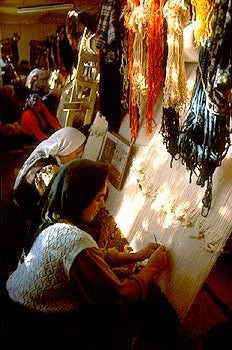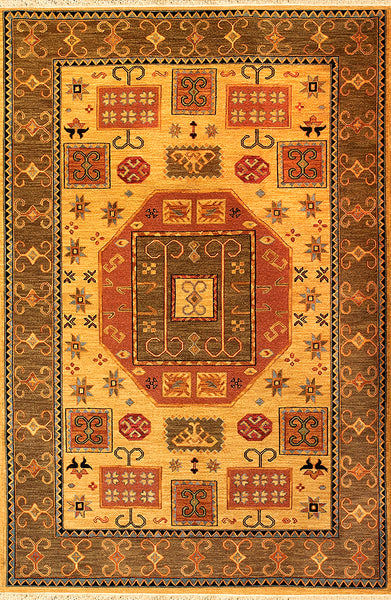Gangchen Tibetans, Highland Sheep
Tibetan wool at it's finest
Start with the best material and you get the best result. That's why Gangchen rugs are made exclusively from the finest Changphel or Tibetan Highland sheep wool. Prized for its thick, long fiber, outstanding tensile strength, and high luster, this wool is absolutely the best for carpets.
Not all wool is created equal. Just as the grain of beautiful wood is the distinguishing factor in contributing to a wonderful piece of furniture's look and inherent value, the special quality of the wool in Gangchens is the factor that distinguishes these extraordinary rugs. The fibers of the wool are thick and long, averaging six inches in length, and the exceptional thickness of these fibers adds to the luster of the Gangchens.
The cuticles or scale-like structures on the fibers of these Tibetan Highland sheep are larger than those found on other sheep. Large scales mean a smoother surface, which is more reflective of light, better at displaying the color and at creating a splendid sheen and a radiant luster, unique to Gangchens alone.
No other fiber takes and holds dye like Tibetan Highland sheep wool. The dyes actually seep into the core of the fibers, dyeing them from the inside out, so the colors are richer, more saturated, and more vibrant.
These rugs are a beautiful marriage of traditional design and construction with simplicity of design, vibrant color, and unsurpassed quality that are so perfect for the well-loved home of today.








